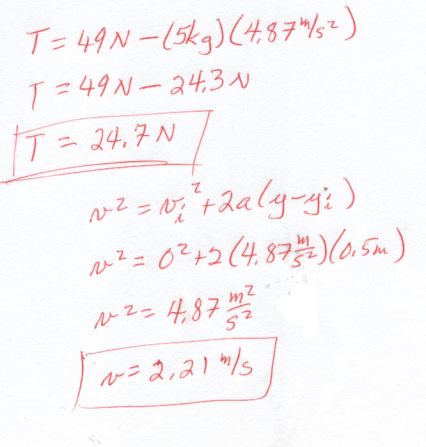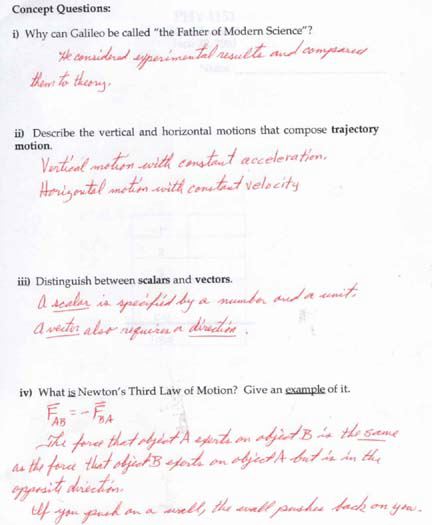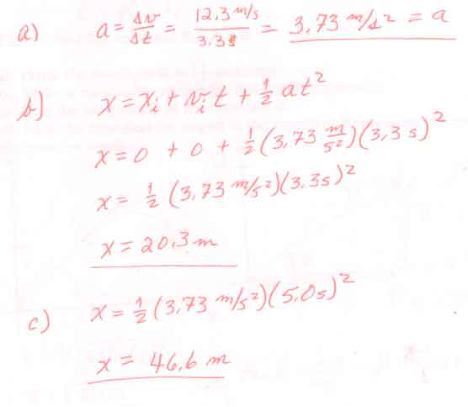
PHY 1151
Hour Exam #1
June 20, 2003
Statistics:
High: 93
Mean: 63
Low: 25
1. A lab cart accelerates from rest to 12.3 m/s in 3.3 s.
a) What is its average acceleration?
b) What distance does it travel in that time?
c) If its acceleration remains constant, how far does it travel in 5.0 s?


2. Add the following vectors:
A = 3 i + 4 j
B = 4 i – 3 j
C = 5 i + 5 j
D = – 3 i + 2 j
R = 9 i + 8 j
That is, find the resultant R = A + B + C + D
a) Write the resultant R in i-j- notation.
b) Make a reasonable sketch for finding R graphically.
c) Find the magnitude of the resultant R.
d) Find the direction (or angle) of the resultant R; measure the angle from the positive x-axis.
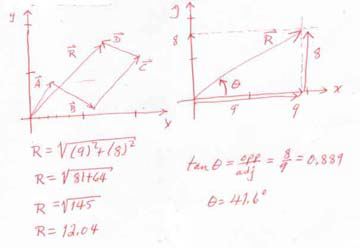
3. A rock is thrown from the top of a cliff with an initial speed of 20 m/s at an angle of 30° above the horizontal. The cliff is 15 m above the canyon floor below.
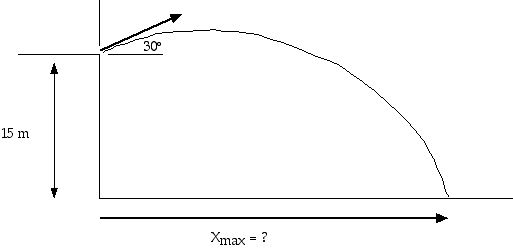
Where does the rock land on the canyon floor below?
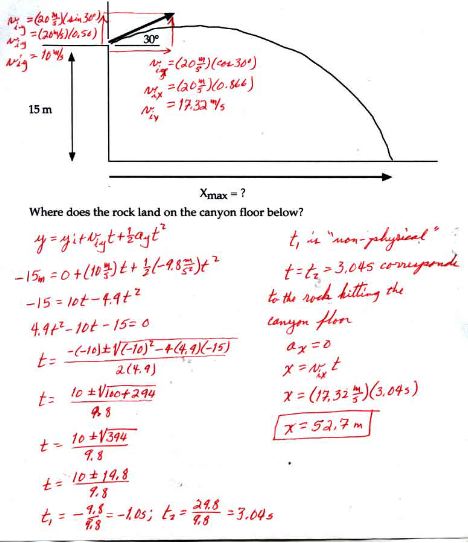

4. A 3-kg block sits on a smooth inclined plane, inclined
20° from the horizontal. This block is attached to a string which runs over
a pulley and is then attached to a 5 kg mass.
a) Draw clear free-body diagrams showing the forces on the block and the hanging mass.
b) Find the tension in the string.
c) Find the acceleration of the block and hanging mass.
d) When the hanging mass has fallen 0.5 m, how fast is it moving?
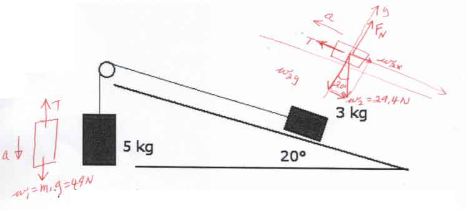
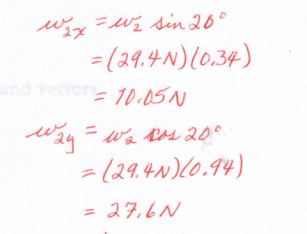
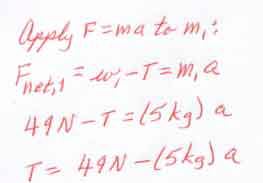
This provides one equation with two unknowns
so we need additional information:
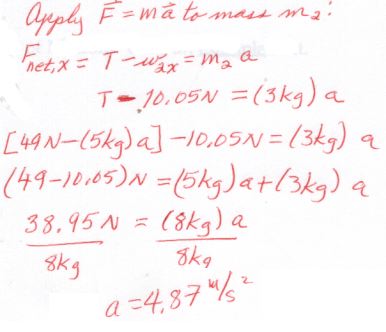
(We did not even use the y-component of Fnet2 = m2
a
We could have used that to find
the normal force FN
which we could then have used to find the friction force
if we had had any friction!)
Now that we know the acceleration, a,
we can use this value to find the tension, T.
We can use either
T - 10.05 N = ( 3 kg ) a
or
T = 49 N - ( 5 kg ) a
